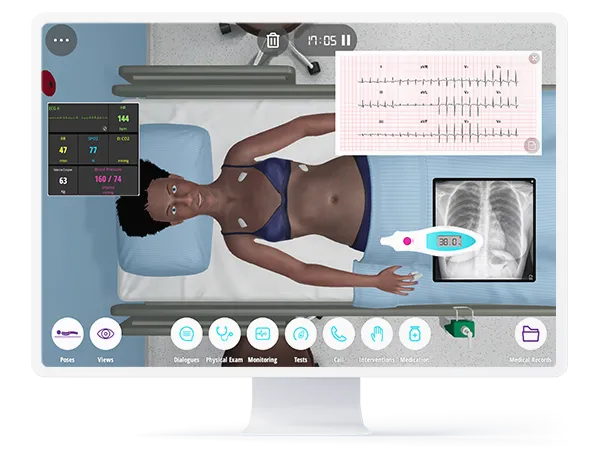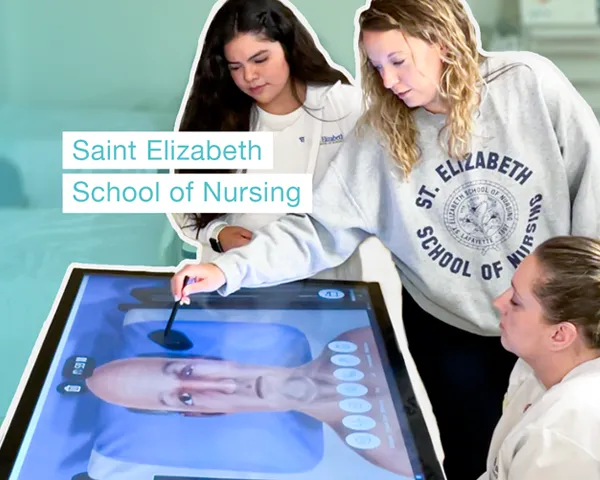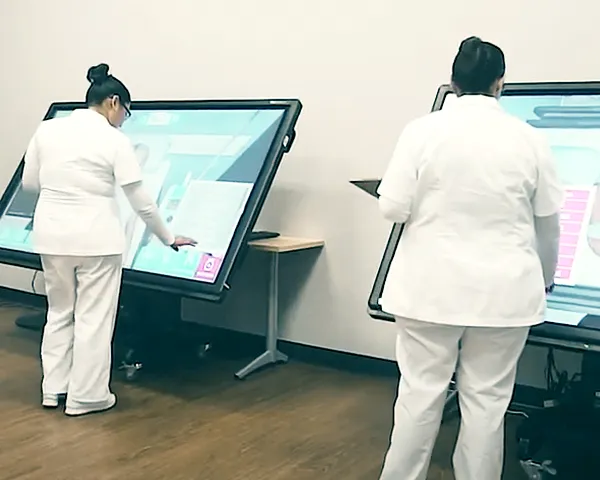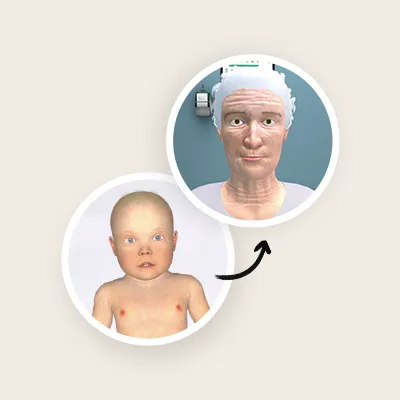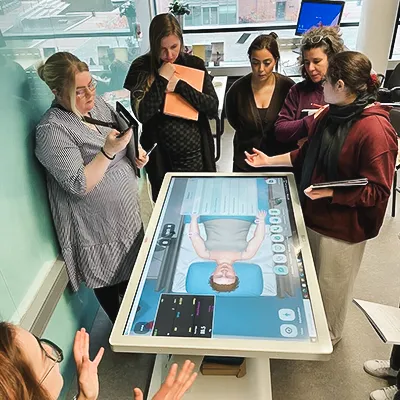
Virtual Patient Simulation for Nursing
Body Interact provides a safe, immersive, and realistic training environment for nursing education through life-like virtual patient scenarios.
- Foster critical thinking and clinical judgment skills
- Promote patient safety and high-quality care
- Improve knowledge retention to meet Nursing competency standards
LPN, LVN
Licensed Practical Nurse / Licensed Vocational Nurse
Perform basic interventions such as taking and interpreting vital signs, administering oral medications (upon receiving such orders), adjusting patient position, etc.
RN
Registered Nurse
Carry out complete physical examinations, and, upon receiving such orders from a doctor, request lab or imaging studies, among other interventions.
NP
Nurse Practitioner
Conduct medical exams. Diagnose and treat clinical conditions. Prescribe and administer medications.
Upgrade your pedagogy with simulation-based learning
Cultivate competency-based learning in Nursing
Modernize Nursing Education with Virtual Scenario-Based Learning
Curriculum integration
Body Interact is a time-saving and cost-effective solution thanks to our extensive library of ready-made clinical cases. Select from scenarios that correlate to your LPN/LVN, RN, or APRN learning outcomes – resulting in a comprehensive and cohesive learning experience that bridges theoretical knowledge and practical application.
Customized scenarios
Customize training scenarios by adapting them to your curriculum needs and student learning objectives. Ensure content relevance and accuracy according to your local protocols and guidelines.
Active learning
Deliver dynamic virtual simulation-based learning experiences. Reimagine traditional nursing education through immersive, engaging, and realistic virtual patient scenarios in your classroom, simulation center, or at home.
Data-driven debriefing
Support student progress by tracking their performance at the end of each clinical scenario. Provide constructive feedback, asses their proficiency based on competency and knowledge, and help them consolidate and validate acquired clinical competencies.
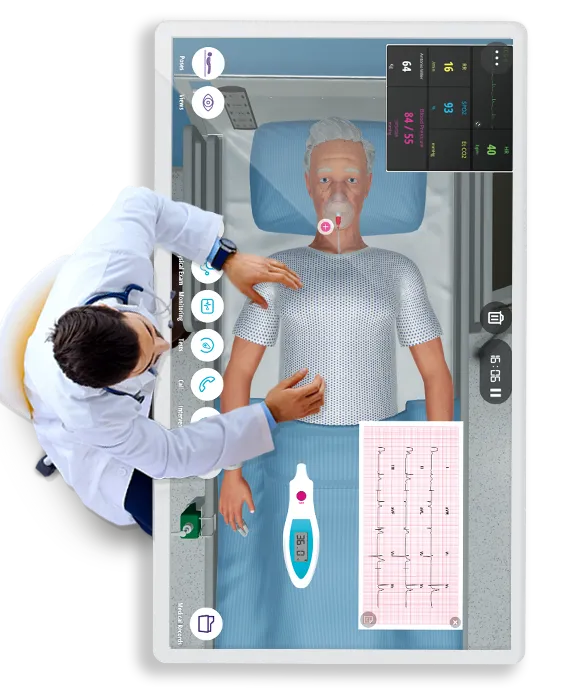
Educational Excellence
Global Impact Study in Clinical Education
Satisfaction
Were highly satisfied with using Body Interact as a new learning tool
Learning gaps
Stated that Body Interact allowed them to bridge learning gaps
Decision-making
Believe that Body Interact helped students to practice decision-making strategies
Feedback
Felt that Body Interact provided rich feedback
Impactful Active Learning for Nursing Education
Explore strategies for implementing Body Interact into your learning environment
Classroom
Build confidence and engagement among Nursing students through teacher-led sessions or small group practice.
Simulation Center
Promote experiential learning. Enhance clinical competence, teamwork, and interdisciplinary collaboration.
Individual Training
Assign clinical scenarios according to teaching objectives. Practice anywhere, anytime – testing skills and knowledge beyond traditional boundaries.
Competency-based assessment
Track student progress with performance analytics through Body Interact’s Learning Management System
BI Studio
Performance assessment
The Body Interact Learning Management System (BI Studio) enables educators to manage their classrooms, assign clinical training scenarios, and track student progress.
Explore the instructor guides, debriefing tools, and performance analytics that support you in facilitating effective virtual simulation-based learning experiences.
Create Objective Structured Clinical Examinations (OSCEs) for standardized assessment of clinical nursing skills.
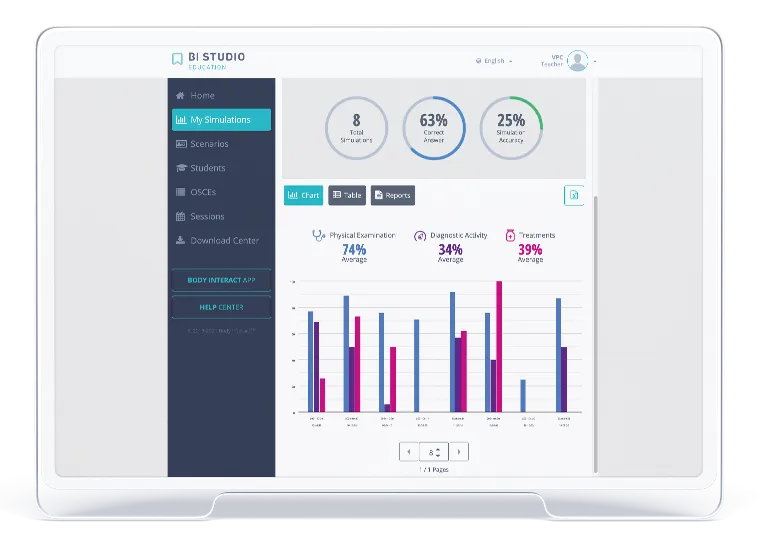
What's new on Body Interact
Discover the latest improvements and get inspired by the Body Interact community. Explore new approaches in healthcare education.
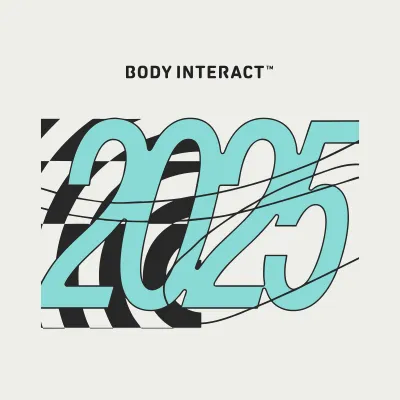
Body Interact Year in Review: Growth, Innovation and Impact
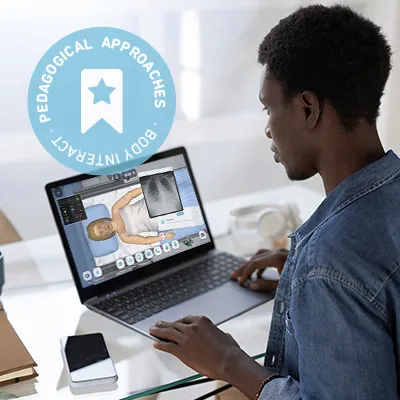
Pedagogical Approach with Body Interact | Distance Learning
Evidence-based educational practices
Revolutionize your Pedagogy with the Body Interact Nursing Curriculum
Integrate immersive and innovative interventions into your teaching. Deliver high-quality nursing education experiences and ensure the alignment with Nursing competency standards
Our content is based on the Nursing Scope and Standards of Practice by the American Nurses Association
Cardiology
Acute coronary syndromes
Arrhythmias
Cardiometabolic disease
Geriatric cardiology
Heart failure
Hypertension
Stable ischemic heart disease
Venous thromboembolism
Emergency medicine
Airway management/Respiratory failure
Emerging infections
Opioid Intoxication/Overdose
Resuscitation
Sepsis
Shock
Trauma
Endocrinology
Adrenal health and disease
Diabetes and glucose metabolism
Dyslipidemia
Obesity
Thyroid disorders
Gastroenterology
Bowel disorders
Colorectal cancer
Esophageal & gastric disorders
Gerontology
Cognitive decline
Cardiovascular disease
Respiratory disease
Renal disease
Elderly abuse
Immunology
Anaphylatic shock
Anaphylaxis
Mental health
Psychotic disorders
Suicide
Nephrology / Urology
Renal failure
Urinary retention
Neurology
Cerebrovascular disease/Stroke
Cognitive disorders/Dementia
Obstetrics
Acute pulmonary embolism
Chorioamnionitis
Eclampsia
Ectopic pregnancy
Placental abruption
Postpartum hemorrhage
Preeclampsia
Pregnancy
Premature rupture of membranes
Sepsis
Shoulder dystocia
Umbilical cord prolapse
Oncology
Triage oncology
Ostomies
Immunosuppression
Pediatrics
Asthma
Meningitis
Pneumonia
Hypovolemic shock
Diabetic ketoacidosis
Laryngotracheitis
Arrhythmias
Drug intoxication
Gastroenteritis
Wound care
Pharmacology
Pain management
Medication adverse effects management
Hypoglycemia management
Cardiovascular treatment
Pulmonology
Asthma
COPD
Pneumonia
Pulmonary edema
Ineffective airway clearance
Dyspnea
Airway clearance
Trauma and acute care surgery
Chest trauma
Abdominal trauma
Critical care illness
Traumatic brain injury
Triage
Manchester triage system
Document the findings of the patient assessment and safety
Wound care
Minor wounds
Chronic wound care
Injury
Surgical wound care
Bedsores (pressure ulcers)
Health assessment and promotion
Adherence to medication
Adherence to lifestyle changes
Patient education
Communication
Therapeutic communication
Patient education
Surgery
Postoperative Care
Sepsis
Trauma
Sepsis
Septic shock
